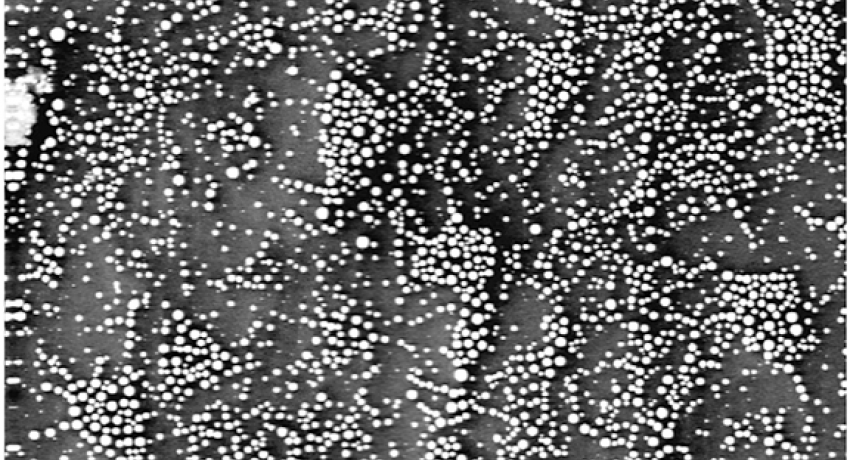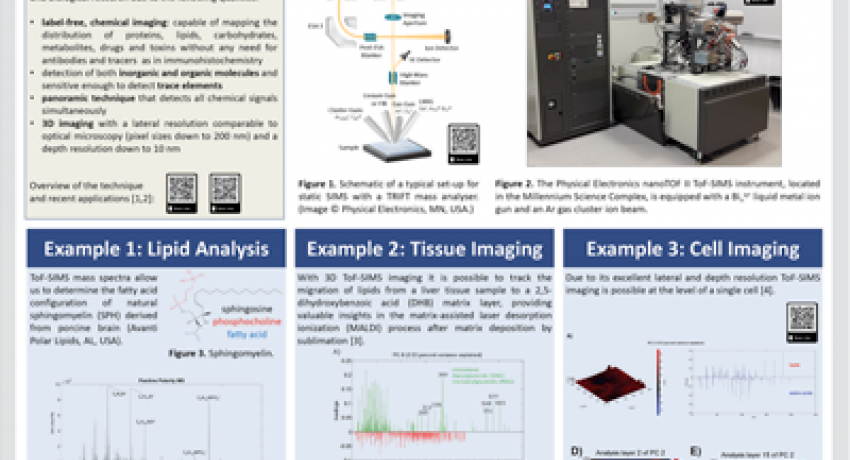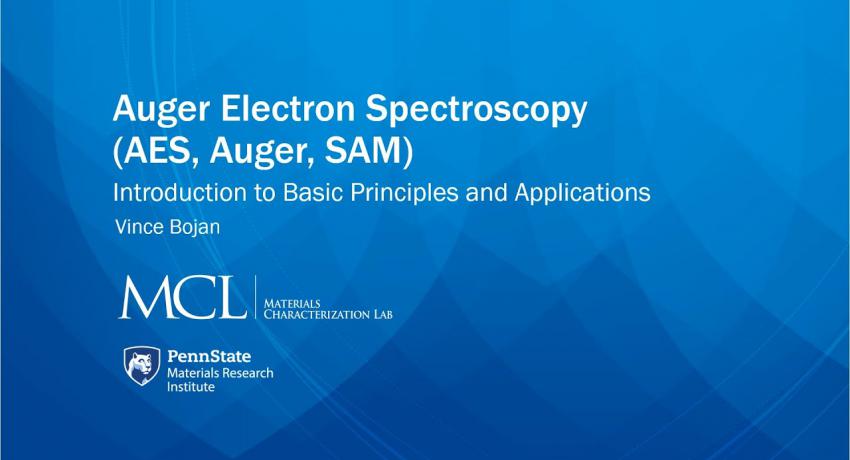A Scanning Auger Microscope is an instrument that combines the spatial resolution of an electron microscope with the surface sensitivity of XPS. A focused electron beam (3-10 keV) is scanned across a sample. Atoms near the surface are ionized, and a fraction of the ionized atoms relax via the Auger process. Auger electrons emitted from the surface are drawn into a spectrometer that ultimately measures their kinetic energy distribution. The technique is inherently surface sensitive because the Auger electrons typically have low kinetic energies (<3kv). The Auger spectra contain information about the concentration and (sometimes) the chemical environment of surface and near-surface atoms. Greater depths (up to a few microns) can be probed by coupling the technique with ion milling. Lateral distributions of elements can be measured with sub-micron resolution. The detection limits are roughly 0.1-1 atomic percent within the information depth. Analyses become more challenging as the electrical resistivity of a sample increases. A variety of methods exist to obtain data on electrically insulating material systems, but Auger Electron Spectroscopy (AES) is typically not used on bulk insulators. The surface sensitivity of AES precludes the use of conductive coatings that are often beneficial for controlling charging in SEM and EPMA analyses.
PHI VersaProbe II XPS with Auger option
- Semi-quantitative compositional analyses without standards
- Defects on semiconductors
- Grain boundary chemistry
- Failure analysis
- Interdiffusion
- Fracture mechanisms
- Surface/interface impurity determination
- Nanoscale material system
- Corrosion
- Metallurgy
- Thin-film composition and structure
- Thin-film depth profiling
- Composite materials



